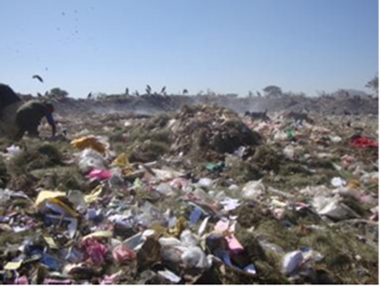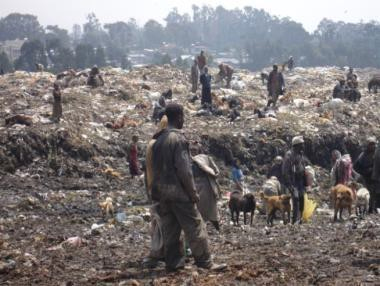1.4 Technology and the environment
Technologies have transformed transport, industry, communications and our lives at home and work. For instance, gadgets such as mobile phones, computers, televisions, microwave ovens and refrigerators have improved living standards for those people who can afford them. Technology can also improve the quality of our environment. For example, energy can be generated from renewable sources such as wind and solar power, which reduces our reliance on non-renewable energy sources such as fossil fuels, and also helps to reduce the release of polluting gases to the atmosphere.
Another example of the benefits from technology is the highly advanced eco-friendly wastewater treatment plant at the St. George Brewery in Addis Ababa. This plant recovers nutrients and waste water from the brewery that would otherwise be released into the environment. This type of technology can help to alleviate the problem of water shortage, prevent surface water pollution and protect the environment.
Although technology has many positive impacts on people and the environment, it also has negative impacts, including the production of toxic waste from technological processes and electronic gadgets that are thrown away when they reach the end of their useful lives, as illustrated in Case Study 1.2.
Case Study 1.2 E-waste in Ethiopia
When electronic equipment or gadgets get old or stop working they are often thrown away. This type of electronic waste is referred to as e-waste. E-wastes pose a huge challenge to the environment because they contain toxic substances such as cadmium and lead from batteries, which leach out and pollute rivers and groundwater. (Leaching means the substances seep out or are washed out by rain into the soil below.) Toxic substances may get into the soil, making it unfit for agriculture. Copper from wiring is valuable for recycling, but if wiring is burned, it produces very hazardous air pollution.
E-waste is becoming a major problem in many African countries, including Ethiopia, where the use of electrical equipment has increased sharply with the rising number of people on higher incomes. According to a United Nations University report, there are about 4300 tonnes of non-functioning computers, televisions, mobile phones and refrigerators in Ethiopia, mostly in the ten largest cities (Manhart et al., 2013).
As there is no proper e-waste management system in Ethiopia, some e-wastes are disposed of together with other household wastes or dumped in an uncontrolled way that may cause huge environmental problems. Figure 1.9 shows open solid waste disposal sites in Addis Ababa and Bahir Dar close to residential areas. All types of waste, including hazardous waste like heavy metals, are discarded here without any treatment, so toxins can seep into the soil and groundwater. (Hazardous waste is any waste that contains material that is potentially harmful, for example, toxic, infectious, corrosive, explosive or flammable materials.)


There is one e-waste demanufacturing facility (DMF) in Addis Ababa managed by the government. The DMF collects e-waste from governmental offices, dismantles them manually and sorts the different components to recover valuable metals (Figure 1.10), which is an example of good practice in e-waste disposal.

1.3 Production of waste and pollutants
